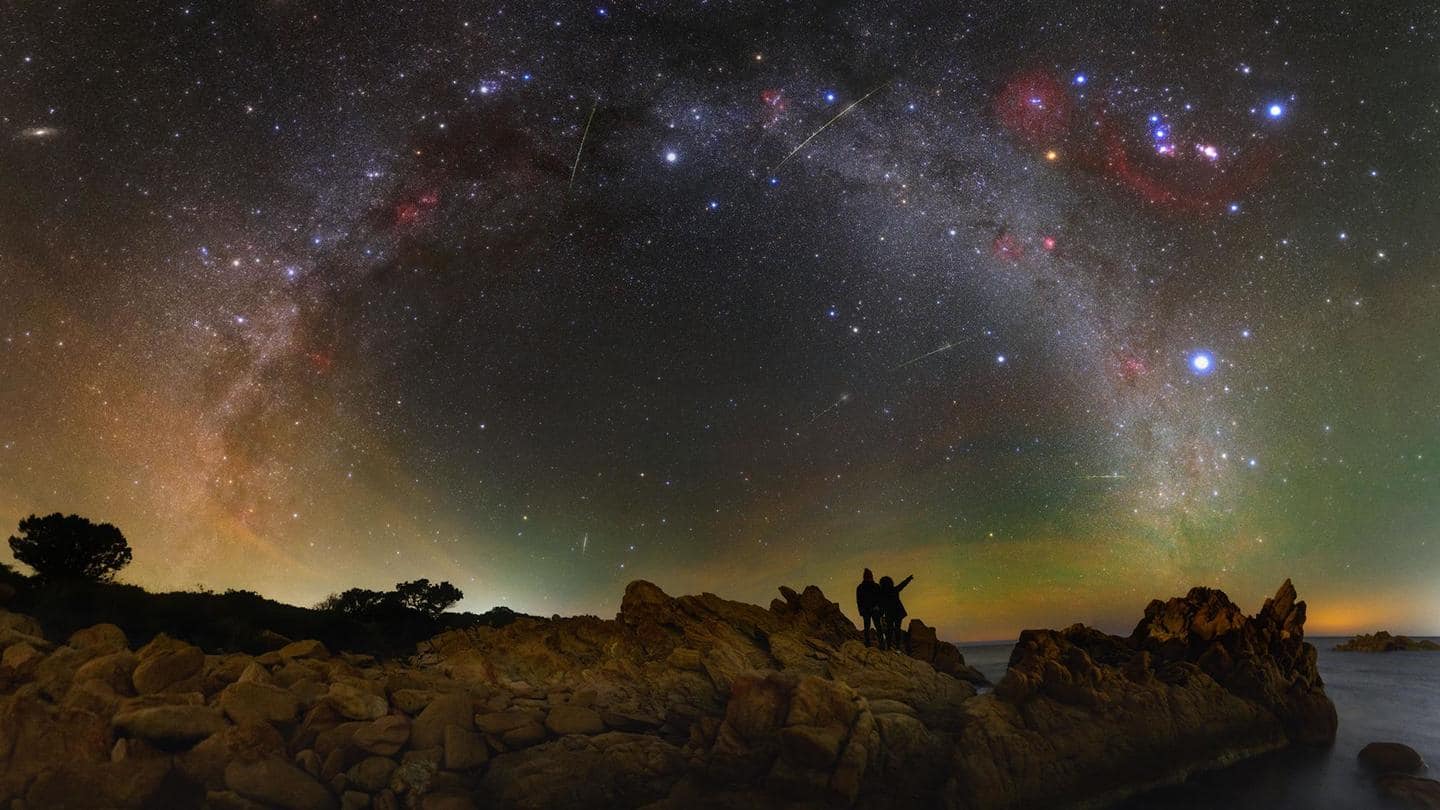
Magical October: NASA lists events for stargazers this month
What's the story
If you're a space enthusiast, October is going to be a busy month for you. The month is packed with events that can make a stargazer swoon. Jupiter, Saturn, Mars, glowing shooting stars... the list is full of celestial spectacles that can't be missed. NASA has given us a list of events to look out for in October 2022 via a tweet.
Context
Why does this story matter?
Stargazing is a great way to ease our minds from the stress and strain of daily life. Apart from observing the spectacular sights, stargazing also puts into perspective how small we are when compared to the magnanimity of the universe. October is a good month for this magical escape. So go out, rid of the chaos, and experience peace in some magnificent sights.
Biggest planets
Jupiter and Saturn are visible throughout October
Jupiter and Saturn, the two biggest planets in the solar system, will be visible throughout the October night sky. You will find them in the southeast early in the evening. They will move toward the west through the night. They will form a triangle with the star Fomalhaut. You will be able to distinguish the planets thanks to their steady light.
Red planet
Mars will change its direction this month
Mars threw early astronomers a curveball when it appeared that the planet changes its direction every two years. At the end of this month, the same thing will happen. The planet, which has been moving east (relative to background stars) all year, will move west in October. In January, it will reverse its course. This is called the retrograde motion of Mars.
Reason
What causes Mars' change in direction?
The apparent change in Mars' direction is nothing but an illusion. This happens due to the way Mars and Earth orbit the Sun. They have elliptical orbits with Earth in the interior orbit. Every 26 months, Earth overtakes Mars. Between the time Earth starts passing Mars and before it passes the red planet, Mars appears to change direction. In reality, this doesn't happen.
Meteor shower
The Orionid meteor shower will be visible throughout the month
Last but not least, glowing pieces of celestial dust will also adorn the October sky. Yes, we're talking about a meteor shower. The Orionid meteor shower, to be specific. This moderate shower will be visible throughout this month. It produces 10-20 meteors/hour at its peak. Just make sure that you're watching this shower from a safe, dark spot, away from bright lights.
Twitter Post
Stargazing calendar for October by NASA
Stargazing in October? We’ve got you covered. 🎃
— NASA (@NASA) October 1, 2022
Jupiter and Saturn are visible throughout the month. The full Moon illuminates the night starting Oct. 9. Mars enters retrograde, and the Orionid meteor shower puts on a show peaking on Oct. 20: https://t.co/OrE9pfHqPr pic.twitter.com/2QAE09GA8n